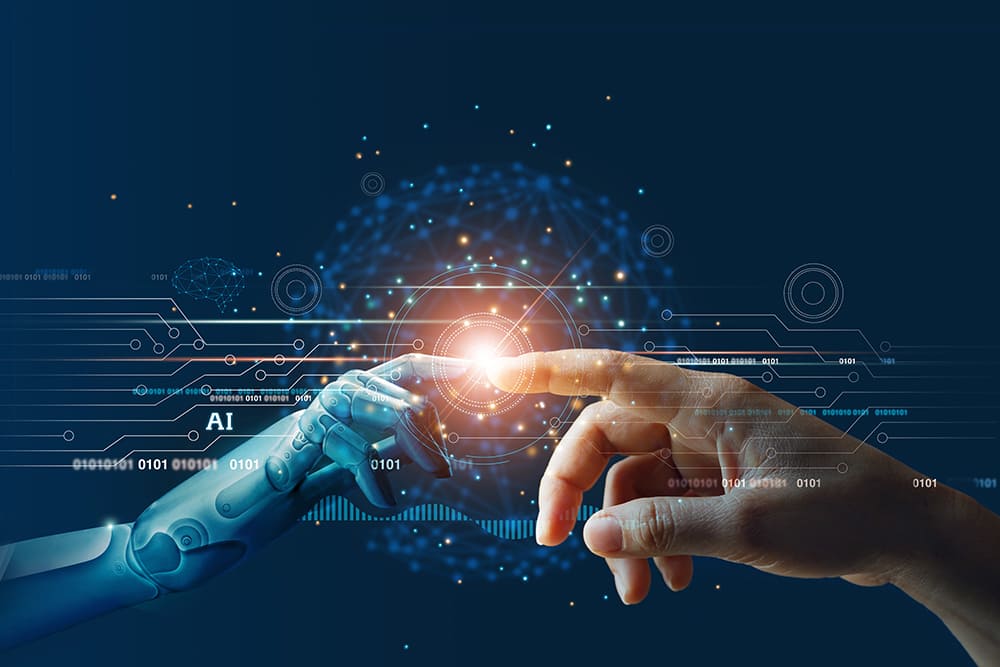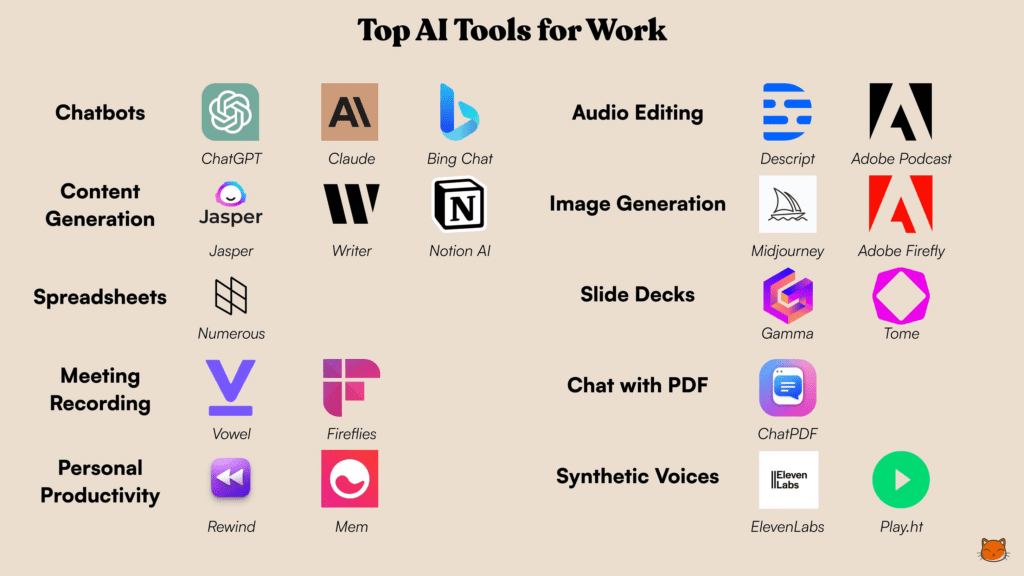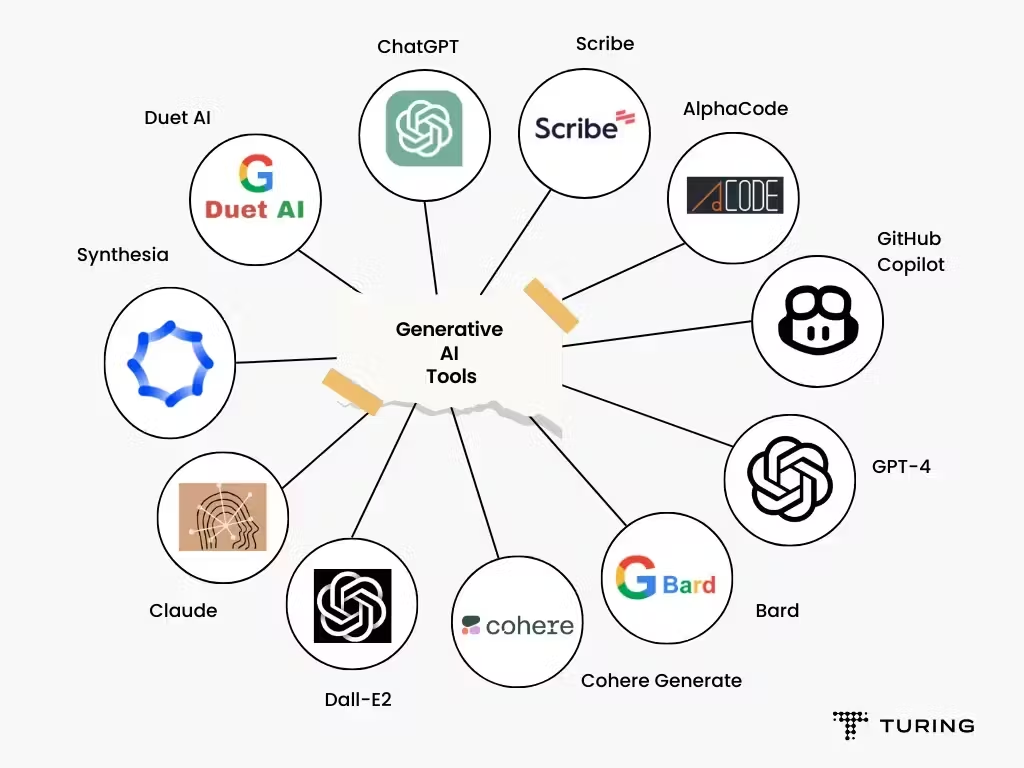7 Ways Artificial Intelligence is Unlocking the IT Industry: A Comprehensive Guide
7 Ways Artificial Intelligence is Unlocking the IT Industry: A Comprehensive Guide
Artificial Intelligence to begin with,
Artificial intelligence (AI) is causing an unprecedented transformation in the IT business. Because artificial intelligence (AI) can replicate human intellect, it is revolutionizing the way the IT sector approaches employment, procedures, and problem-solving. The field of artificial intelligence (AI) is driving innovation across several IT domains, encompassing automation, predictive analytics, and customized user interfaces.
It is evident that the IT industry is rapidly adopting and utilising AI technology. Organisations are integrating AI-powered solutions more often in an effort to boost output, streamline workflows, and deliver better services. In fact, according to a Gartner projection, the global market for AI software is expected to reach $157 billion by 2025, indicating the technology’s immense potential and widespread use in the IT industry.
Artificial Intelligence (AI) is more than just a buzzword; it’s a revolutionary technology that is fundamentally transforming the way IT functions. Artificial Intelligence (AI) is enabling organisations to achieve more productivity by automating repetitive tasks, enhancing cybersecurity, and streamlining IT infrastructure management.
We’ll examine seven key ways AI is revolutionising the IT industry in this in-depth analysis. We’ll examine how AI is changing a number of IT domains, from automation and cybersecurity to predictive analytics and customised user experiences. Come along as we examine the revolutionary developments that are utilising AI to change the face of IT in the future.
1: Automation of Repetitive Tasks
Artificial intelligence (AI) is changing the IT industry by precisely and effectively automating repetitive tasks such as data entry and network monitoring.
Automation of Data Entry: AI-powered solutions can extract and input data into the needed format from a range of sources, including emails, databases, and documents. Machine learning techniques, for example, are utilised by applications such as Automation Anywhere and UiPath to find patterns and automate data entry processes. This reduces the likelihood of errors due to human data entry while also saving time.

Network monitoring and management are being revolutionised by artificial intelligence, which automates repetitive tasks and provides real-time information. SolarWinds Network Performance Monitor and Cisco’s Tetration utilise artificial intelligence (AI) algorithms to monitor network traffic, detect anomalies, and predict issues before they occur. These technologies optimise performance, properly allocate resources, and automatically alter network settings to ensure seamless operation and minimal downtime.
Using AI-powered automation solutions, IT personnel may improve processes, increase productivity, and focus on more important operations that require human interaction. The potential for automation in IT will only rise as AI advances, resulting in enhanced efficiency and innovation in the industry.
2: Enhanced Cybersecurity
Recent years have seen a phenomenal increase of the cybersecurity environment, mostly due to artificial intelligence (AI) technology. AI has become a potent ally in the continuous battle against cyberthreats, providing state-of-the-art skills in threat identification, anomaly detection, and fraud prevention.
Threat identification is one of the main ways artificial intelligence enhances cybersecurity. Traditional cybersecurity approaches frequently fail to keep up with the constantly evolving tactics used by hackers. Contrarily, artificial intelligence (AI) is able to analyse vast volumes of data in real time and spot patterns and behaviours that point to possible dangers. By continuously learning from fresh data, AI-powered systems enable companies to stay one step ahead of cyberattacks and react swiftly to emerging dangers.
Furthermore, anomaly detection with AI is highly effective. Artificial intelligence (AI) algorithms may identify deviations from a system’s usual operating procedure, which could suggest a security breach or other suspicious behaviour. AI can swiftly detect potential threats for further investigation, whether in the form of unusual network traffic, unauthorised access attempts, or odd user activity.
Furthermore, AI is critical in combating fraud. Financial institutions and internet corporations may use machine learning algorithms to evaluate historical data and identify fraudulent patterns and trends, preventing fraudulent transactions from occurring.
In general, artificial intelligence (AI) is revolutionising cybersecurity by providing organisations with the tools they need to proactively identify and neutralise cyberthreats, therefore securing their infrastructure and important data.

3: Predictive Analytics
Artificial intelligence (AI)-powered predictive analytics is revolutionising the IT industry by allowing firms to make data-driven decisions with previously unheard-of precision. Businesses can make highly accurate forecasts about the future because to artificial intelligence (AI) algorithms that scan massive amounts of historical and present data to identify patterns, trends, and correlations.
Predictive analytics is being used in a variety of ways in the IT sector to boost performance and efficiency. One of the most common applications is to predict future trends. AI algorithms may help IT businesses stay ahead of the curve by analysing past data to detect emerging patterns in technology, consumer behaviour, and market demand.
Furthermore, predictive analytics is an invaluable tool for understanding customer behaviour. IT companies may anticipate their consumers’ needs and create tailored experiences by analysing consumer data and identifying patterns and preferences using AI.
Predicting system failures and performance issues is a common use of predictive analytics in the realm of IT. Artificial intelligence (AI) can predict when hardware or software faults are likely to occur by assessing data from several sources, such as sensors and monitoring tools. This helps IT personnel to take preventative measures before problems arise.
Overall, AI-powered predictive analytics is transforming the IT industry by allowing organisations to spot future trends, understand customer behaviour, and proactively manage their IT infrastructure for maximum performance and efficiency.
4: Improved Customer Service
Client service is essential to keeping customers happy and loyal in the fast-paced IT sector of today. AI has significantly impacted IT industry customer service. AI-powered chatbots and virtual assistants are revolutionising how companies engage with their clientele.
These AI-powered solutions are accessible seven days a week, twenty-four hours a day, and they react fast to requests and concerns from customers. They are capable of carrying out a variety of duties, such as identifying technical problems and providing simple answers to inquiries. Chatbots and virtual assistants driven by artificial intelligence (AI) increase overall productivity and efficiency by automating repetitive operations, freeing up human agents to focus on more difficult problems.
AI is already being used by several top IT businesses for customer assistance. For instance, IBM’s Watson Assistant is a virtual assistant driven by AI that enables companies to offer better customer service by comprehending and instantly reacting to consumer inquiries. In a similar vein, Salesforce’s Einstein AI use machine learning to assess client data and offer users tailored support.
IT firms may boost customer happiness and loyalty by using AI-powered chatbots and virtual assistants to improve customer service quality and response times. Customers gain from this, and businesses can maintain their competitiveness in the fast-paced market of today.

5: Optimised IT Infrastructure Management
IT infrastructure management must be effective in order for any IT-based organisation to function smoothly. Because to advancements in artificial intelligence, this method is now more effective and efficient than ever before.
AI streamlines a variety of activities, including capacity planning, resource allocation, and network optimisation, hence improving IT infrastructure management.
Network Optimisation: AI algorithms constantly analyse performance data and network traffic to identify bottlenecks and enhance network settings. AI ensures top performance and reliability by constantly altering network settings, hence decreasing downtime and improving bandwidth.
Resource Allocation: AI-powered systems dynamically distribute resources in response to demand by monitoring resource utilisation trends in real time. This ensures the efficient use of resources like as CPU, memory, and storage, reducing waste and running costs.
AI-powered capacity planning assists IT teams in preparing for future expansion by studying historical data and anticipating future resource requirements. AI enables organisations to scale their IT infrastructure proactively by accurately forecasting demand, allowing them to meet the demands of their growing business without over- or under-provisioning resources.
Finally, AI is changing IT infrastructure management by simplifying networks, effectively allocating resources, and enabling proactive capacity planning. Finally, this enables firms to reduce costs, increase productivity, and preserve their competitiveness in the ever-expanding digital market.
6: Personalised User Experiences
Because AI has the potential to be a game-changer, personalised user experiences have become essential to current IT services. Because AI algorithms can provide tailored experiences based on individual interests, habits, and past interactions, they are revolutionising the way businesses connect with their consumers.
Massive amounts of user data are analysed by AI to discover the interests, habits, and preferences of the users. With the use of machine learning algorithms, AI is able to predict client preferences with remarkable accuracy and identify complex patterns in this data. This makes it possible for IT companies to provide each user highly customised services, recommendations, and information.
Furthermore, by allowing components to select whether to update in response to changes in props or state, the shouldComponentUpdate lifecycle method or PureComponent can prevent unnecessary re-renders. This optimisation strategy can significantly reduce the virtual DOM’s effort while increasing the application’s responsiveness.
Streaming services, for example, utilise AI-powered recommendation algorithms to suggest films or TV shows that match users’ likes based on viewing habits, ratings, and other activities. Similar to this, e-commerce companies employ AI to provide product suggestions based on customer browsing history, previous purchases, and demographic information.
Businesses may increase customer satisfaction, engagement, and income by creating customised user experiences. When ideas and content match users’ interests and preferences, they feel valued and understood. Personalised user experiences will become increasingly crucial in deciding the path of the IT sector, boosting innovation and competitiveness as AI improves.
7: Accelerated Software Development
AI is playing a crucial role in speeding up the software development process in the fast-paced world of information technology, where innovation is essential. AI-powered tools and technologies are revolutionising traditional development processes, making them faster, more efficient, and less prone to mistake.
AI is used for code generation, testing, and debugging, hence streamlining the entire development process. AI algorithms can examine enormous amounts of code and data to generate new code snippets, saving developers time spent writing repetitive code. This not only speeds up the development process, but also improves code quality and consistency.
Furthermore, AI-powered testing systems may automatically generate and run test cases, discovering faults and vulnerabilities quicker and more precisely than manual testing methods. This helps developers to discover and fix challenges earlier in the development process cycle, saving time and resources.

When a function call happens during rendering, the useMemo hook caches the result and only recalculates it if the dependencies provided in its dependency array change. This improves the overall efficiency of React components by ensuring that expensive computations are only performed when absolutely required.
Similarly, the useCallback hook memoizes the specified callback function before returning a memoized version of it. This prevents unnecessary re-rendering of child components when parent components are re-rendered, which is especially useful when providing callbacks to those components.
Additionally, AI-based debugging tools may evaluate code, detect errors, and even offer fixes, making it easier for engineers to solve problems. AI relieves engineers of these onerous and repetitive tasks, allowing them to focus on higher-level work such as developing cutting-edge technologies and improving user experience.
Overall, artificial intelligence is altering software development by making it faster, more efficient, and less error-prone. This enables IT businesses to create high-quality software solutions more quickly and successfully than in the past.
Conclusion
Accelerated Software Development: AI is accelerating the software development process, from code generation to testing and debugging.
Artificial intelligence (AI) is revolutionising the IT business in a variety of ways, including giving creative solutions to long-standing challenges and opening up new opportunities. Here are seven ways that AI is transforming the IT industry:
Automation of Repetitive Tasks: AI-powered automation solutions are improving processes, reducing human labour, and increasing productivity.
Enhanced Cybersecurity: AI’s better threat detection, anomaly identification, and fraud prevention skills help to enhance cybersecurity activities.
Predictive analytics: AI systems sift through massive amounts of data to find trends and provide intelligent insights.
Better Customer Service: Artificial intelligence-powered chatbots and virtual assistants are revolutionising customer service by providing faster and more personalised support.
AI enhances network performance, resource allocation, and capacity planning. Customised User Interfaces: AI systems are delivering personalized content, recommendations, and user experiences based on individual preferences and behaviors.
Accelerated Software Development: AI is accelerating the software development process, from code generation to testing and debugging.
Accelerated Software Development: AI is accelerating the software development process, from code generation to testing and debugging.
Accelerated Software Development: AI is accelerating the software development process, from code generation to testing and debugging.
Accelerated Software Development: AI is speeding up the software development process, from code creation to testing and debugging.
Accelerated Software Development: AI is speeding up the software development process, from code creation to testing and debugging.
Artificial intelligence has huge potential to transform the IT business in the future. As AI advances, we may expect to see many more breakthroughs, better productivity, and innovation in many aspects of the IT industry. By using AI technology now, firms may simplify operations and prepare for tomorrow’s opportunities and problems. AI is more than just a tool; it is a transformative force that will have far-reaching consequences for information technology.


